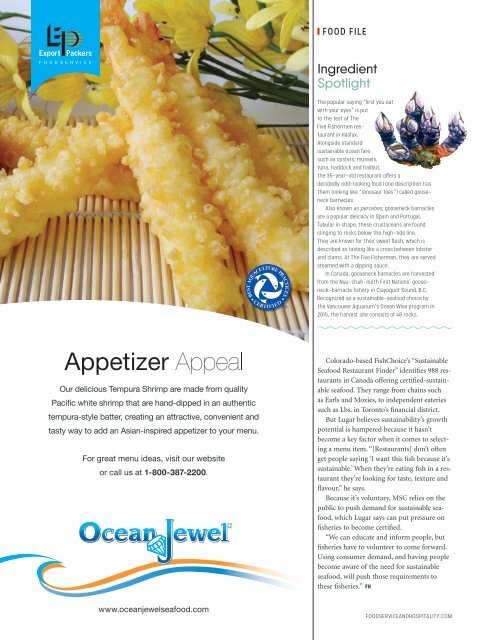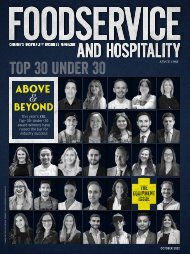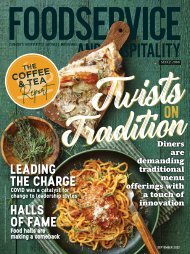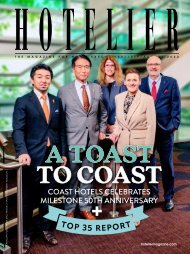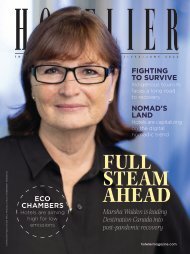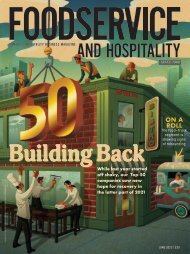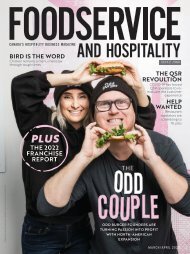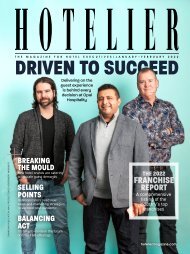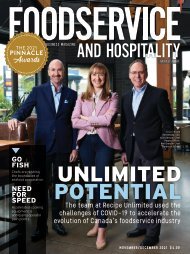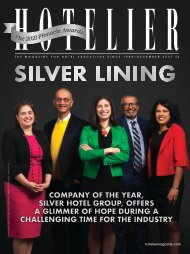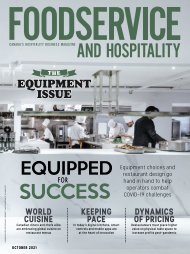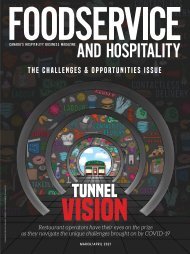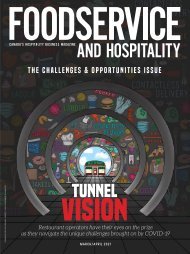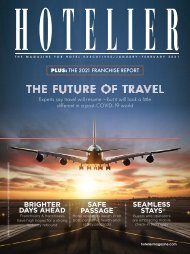FH1117
You also want an ePaper? Increase the reach of your titles
YUMPU automatically turns print PDFs into web optimized ePapers that Google loves.
FOOD FILE<br />
Ingredient<br />
Spotlight<br />
®<br />
The popular saying “first you eat<br />
with your eyes” is put<br />
to the test at The<br />
Five Fishermen restaurant<br />
in Halifax.<br />
Alongside standard<br />
sustainable ocean fare<br />
such as oysters, mussels,<br />
tuna, haddock and halibut,<br />
the 35-year-old restaurant offers a<br />
decidedly odd-looking food (one description has<br />
them looking like “dinosaur toes”) called gooseneck<br />
barnacles.<br />
Also known as percebes, gooseneck barnacles<br />
are a popular delicacy in Spain and Portugal.<br />
Tubular in shape, these crustaceans are found<br />
clinging to rocks below the high-tide line.<br />
They are known for their sweet flesh, which is<br />
described as tasting like a cross between lobster<br />
and clams. At The Five Fishermen, they are served<br />
steamed with a dipping sauce.<br />
In Canada, gooseneck barnacles are harvested<br />
from the Nuu-chah-nulth First Nations’ gooseneck-barnacle<br />
fishery in Clayoquot Sound, B.C.<br />
Recognized as a sustainable-seafood choice by<br />
the Vancouver Aquarium’s Ocean Wise program in<br />
2015, the harvest site consists of 48 rocks.<br />
Colorado-based FishChoice’s “Sustainable<br />
Seafood Restaurant Finder” identifies 988 restaurants<br />
in Canada offering certified-sustainable<br />
seafood. They range from chains such<br />
as Earls and Moxies, to independent eateries<br />
such as Lbs. in Toronto’s financial district.<br />
But Lugar believes sustainability’s growth<br />
potential is hampered because it hasn’t<br />
become a key factor when it comes to selecting<br />
a menu item. “[Restaurants] don’t often<br />
get people saying ‘I want this fish because it’s<br />
sustainable.’ When they’re eating fish in a restaurant<br />
they’re looking for taste, texture and<br />
flavour,” he says.<br />
Because it’s voluntary, MSC relies on the<br />
public to push demand for sustainable seafood,<br />
which Lugar says can put pressure on<br />
fisheries to become certified.<br />
“We can educate and inform people, but<br />
fisheries have to volunteer to come forward.<br />
Using consumer demand, and having people<br />
become aware of the need for sustainable<br />
seafood, will push those requirements to<br />
these fisheries.” FH<br />
FOODSERVICEANDHOSPITALITY.COM


